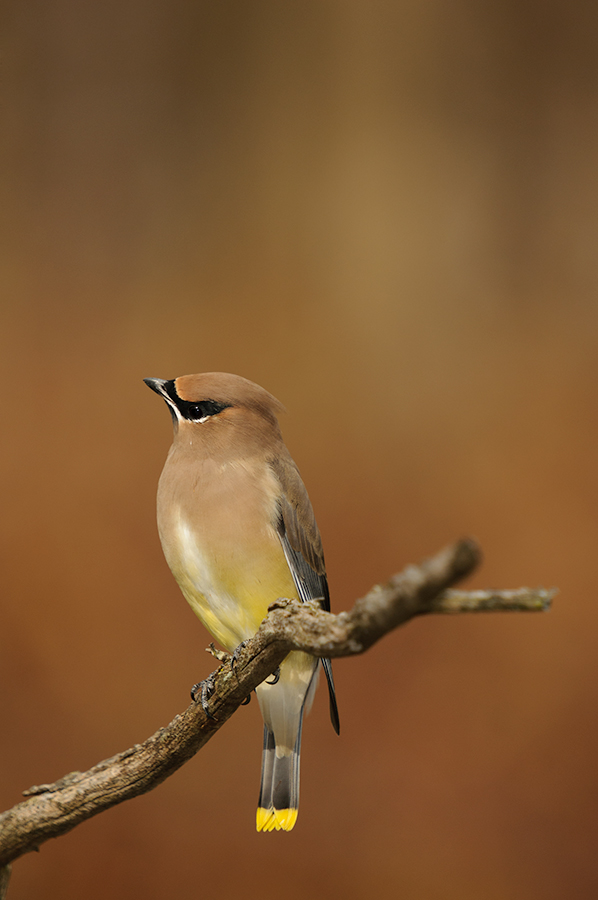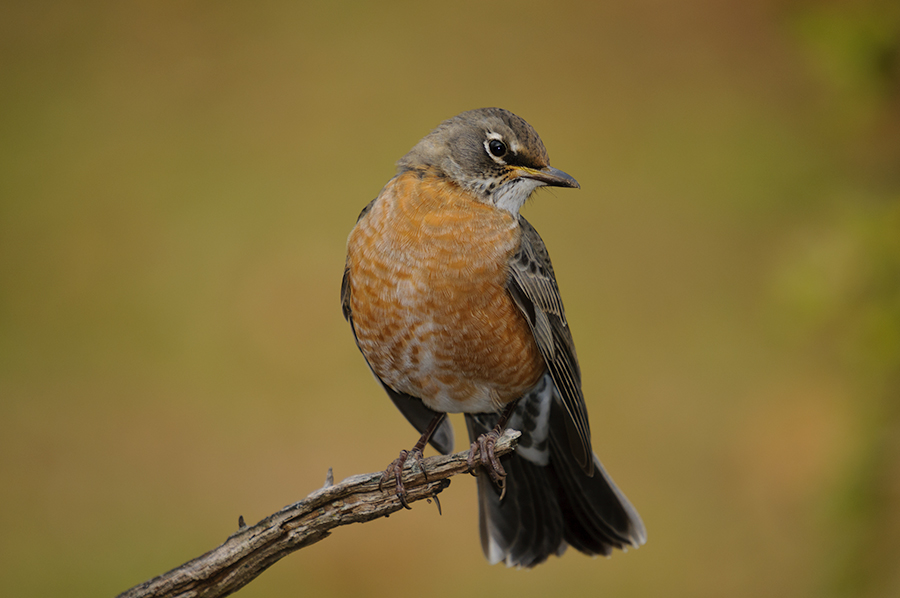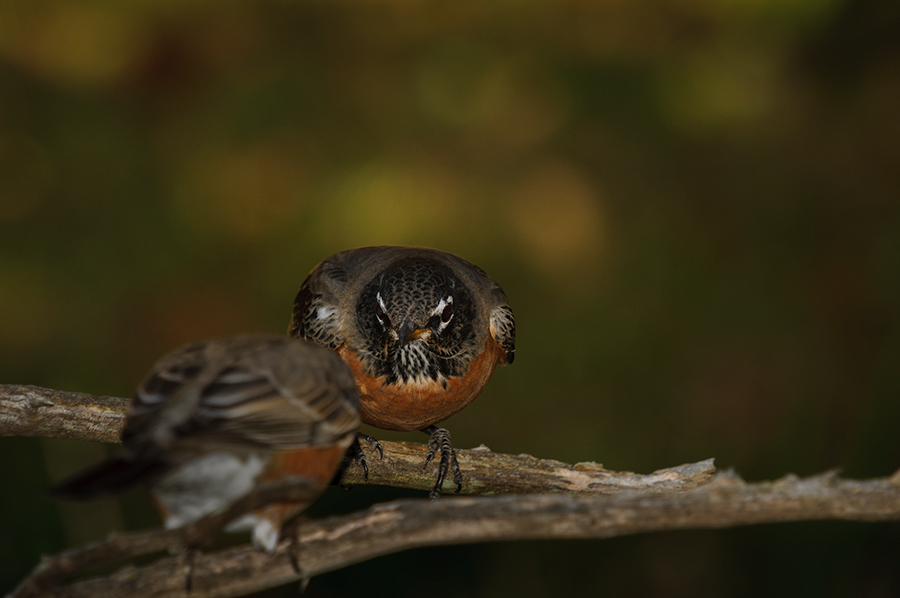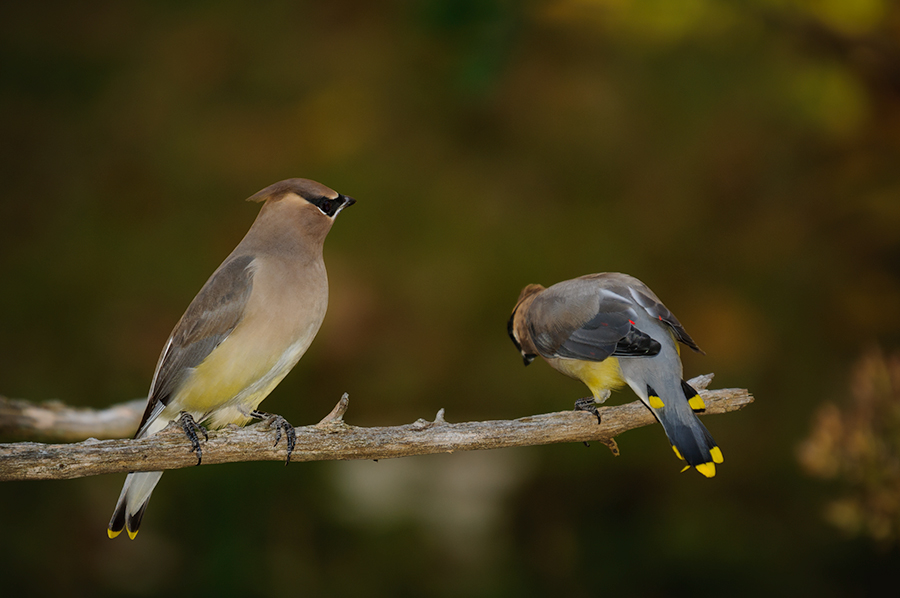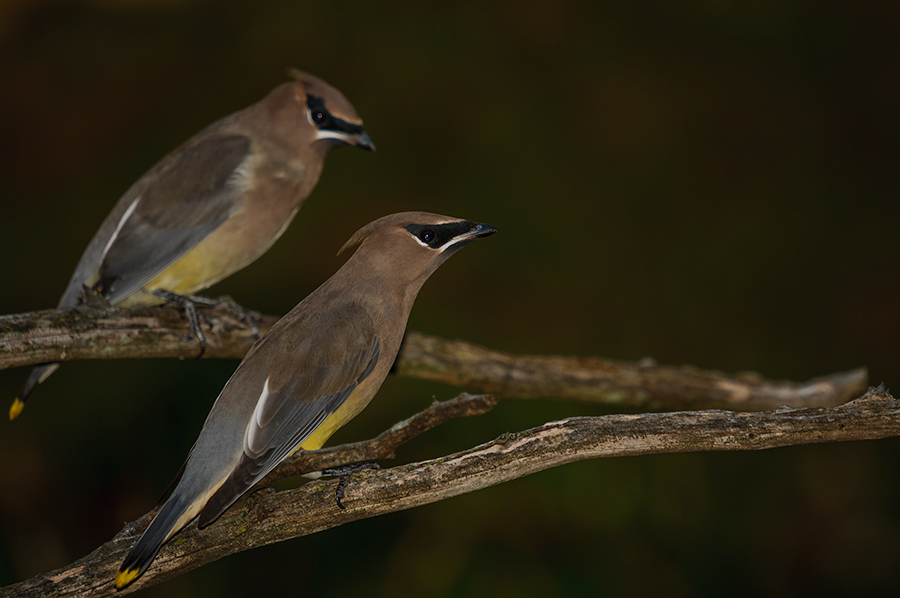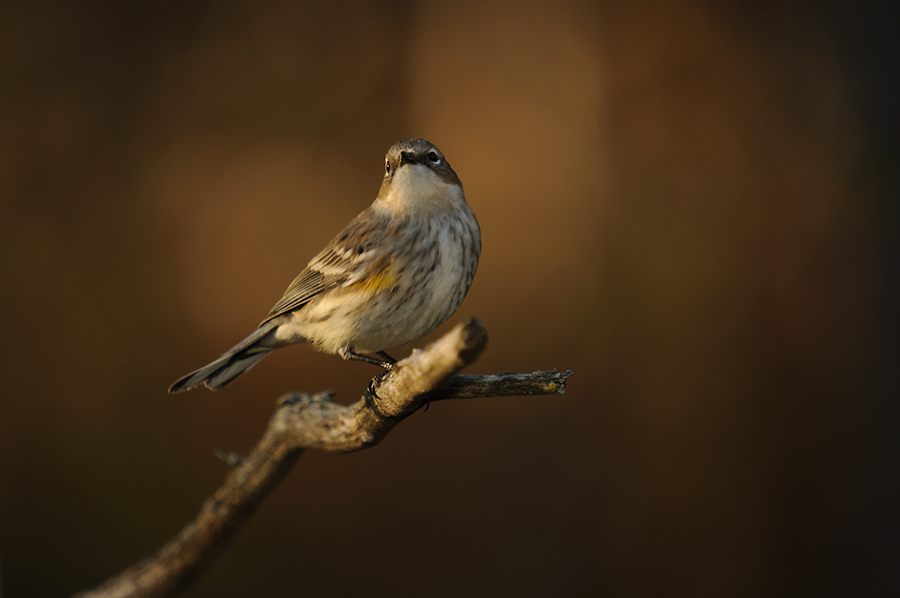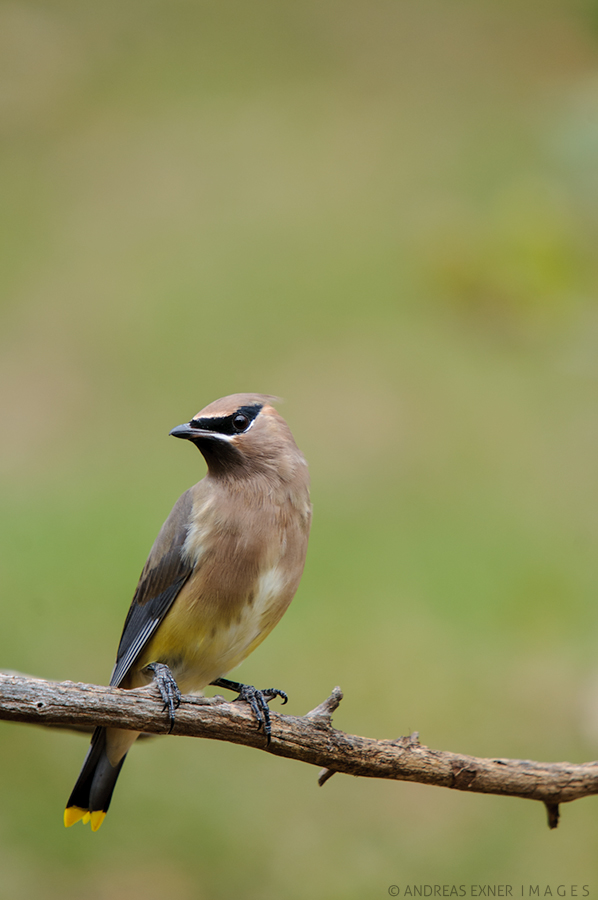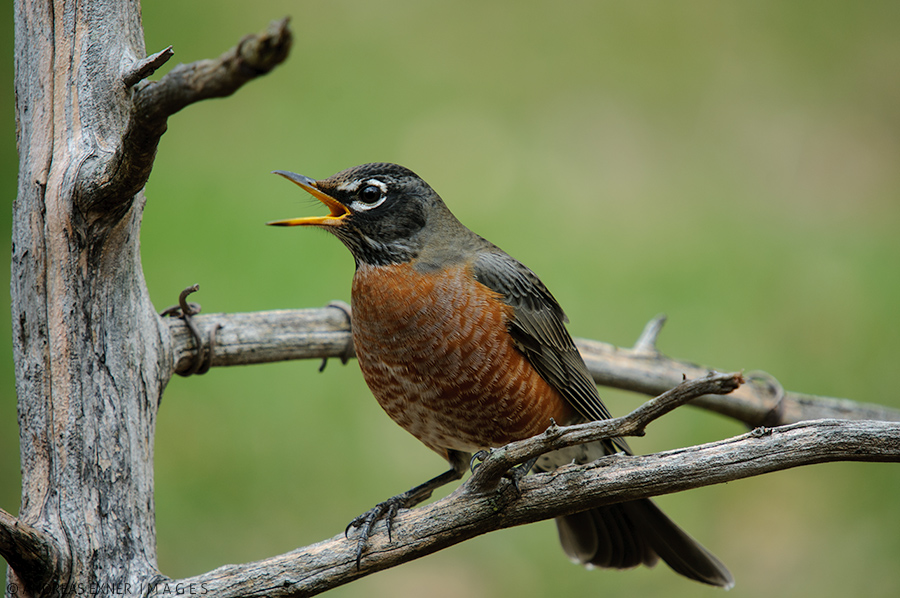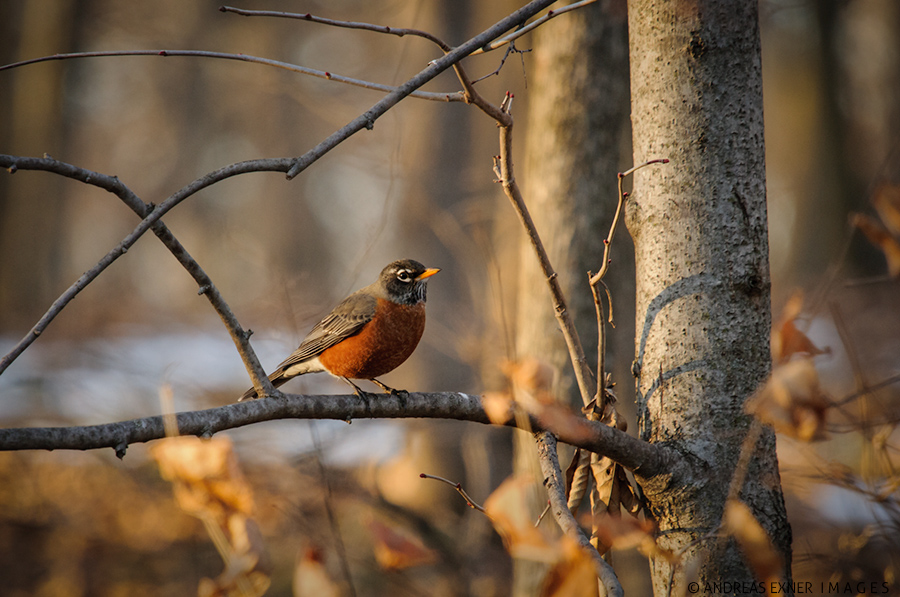
The avid reader of my blog may ask why I post a picture today that is way below my usual quality standards, except for the light, which I think is good. As you can see the photo has an awful distracting background, branches hanging all over the place, and the bird is placed almost dead center. Well, there wasn't actually a plan to post an image today but here is why you have to put up with this.
My Sigma 50-500 / 4.5-6.3 APO EX DG HSM lens came back from a necessary repair job today and I wanted to test it while there was still a little bit light outside. In order to test the focus accuracy of the lens I shot about 200 pictures, mostly static stuff (our satellite dish in the yard is a perfect subject for test shots ;-) ).
Back in the house I suddenly saw a flock of American Robins foraging in our woods. They literally turned every leaf on the ground upside down. This confirms an observation we made several times already during the last few years, the robins don't migrate very far south in the winter. It is cold here but most of the snow has melted over the weekend. Obviously this is enough for the American Robin to move back into the area here. However, it felt a little like spring already and I enjoyed watching them.
As I mentioned the light quality wasn't bad and I set up the tripod in my "bedroom blind" and made some more test shots with the birds as the subject. For the sake of comparison I used the center AF sensor of the D300s only. And this is why the bird sits almost dead center in the frame. I cropped the image slightly on the left and bottom side to make it a little more pleasing. The photo was made at 500 mm, 1/125 sec, f8, -0.5EV, and ISO 800. I usually don't use such a high ISO setting for my wildlife photography but pushing the limits, while making test shots, is a good way to find out where the limits really are in order to be prepared for a future "ones in a lifetime" click. Stay tuned for better stuff to come ;-)...
